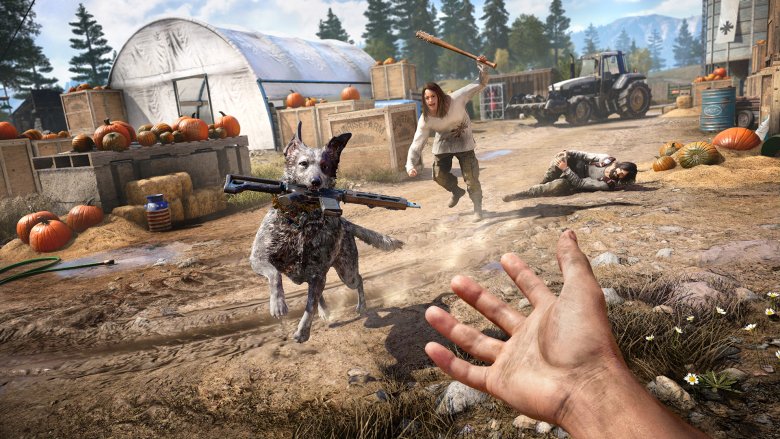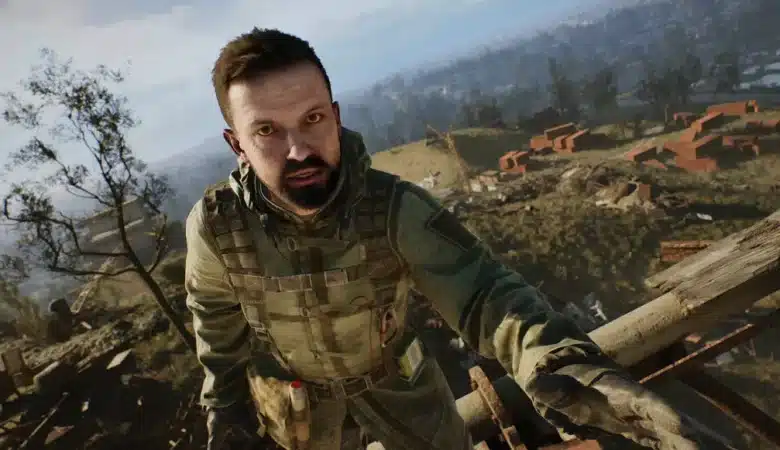Open world games have become popular with a gaming experience that transcends the boundaries of traditional gameplay, offering virtual realms where players are not confined to linear narratives or restrictive environments. In the dynamic landscape of interactive entertainment, open world games have emerged as a genre that captivates players with its expansive landscapes, limitless possibilities, and the freedom to forge their own paths within the game universe.
At the heart of open world gaming lies a design philosophy that breaks away from the structured progression found in more linear games. Unlike their counterparts, open world games grant players the autonomy to explore vast and intricately detailed environments, providing a sense of agency that extends beyond the confines of a predetermined storyline. It is within these boundless horizons that players can truly immerse themselves in the virtual worlds, shaping their own destinies and narratives through the choices they make.
The growing popularity of open world gaming is a testament to the profound impact these games have had on the industry and the gaming community. Players are increasingly drawn to the allure of expansive worlds that offer not only a plethora of activities but also the freedom to navigate and interact with the environment in ways that resonate with their individual playstyles. As game developers continue to push the boundaries of technology and design, the allure of open world games has reached unprecedented heights, making them a dominant force in the contemporary gaming landscape.
What is Open World Games?
Open world games, also known as sandbox or free-roaming games, represent a distinctive genre within the gaming industry. Unlike traditional linear games that follow a predetermined sequence of events, open world games present players with expansive virtual environments that invite exploration and interaction. The defining feature of open world games lies in the liberation they offer players from the constraints of a linear narrative, providing a dynamic playground where the virtual world is at their fingertips.
Non-Linear Gameplay: At the core of open world games is the concept of non-linear gameplay. Unlike linear games that guide players through a pre-established story arc, open world games empower players to make choices that influence the direction of the narrative. The plot unfolds based on the decisions made by the player, leading to a multitude of possible outcomes. This non-linear structure not only enhances replayability but also fosters a sense of agency, allowing players to shape the story according to their preferences and actions.
Vast Landscapes: A hallmark of open world games is the sheer scale and intricacy of their virtual landscapes. These games feature expansive and highly detailed environments, ranging from sprawling cities to untamed wilderness. The landscapes are not merely backdrops; they are integral to the gameplay experience. Players can traverse diverse terrains, discover hidden locations, and embark on epic journeys, creating a sense of realism and immersion unparalleled in more confined gaming environments.
Player Freedom: The essence of open world gaming lies in the freedom bestowed upon players. Unlike games with linear progression, open world games encourage exploration and experimentation. Players can deviate from the main storyline, engage in side quests, interact with non-playable characters (NPCs), and immerse themselves in the richness of the virtual world. Whether it’s choosing a preferred playstyle, pursuing various objectives simultaneously, or simply wandering off the beaten path, player freedom is a fundamental aspect that defines the open world gaming experience.
Top 4 Open World Games of 2023
As the gaming landscape evolves, each year brings forth a new wave of open world experiences that captivate players with their innovation and immersive gameplay. In 2023, several outstanding titles have emerged, pushing the boundaries of what is possible in the realm of open world gaming.
Elden Ring
Elden Ring’s open-world design is a triumph of meticulous craftsmanship. The Lands Between sprawls before the player, an interconnected realm teeming with diverse landscapes, from desolate wastelands to majestic castles.
The open-world structure transcends mere size, offering a living, breathing environment where the passage of time and dynamic weather contribute to a sense of realism. Unlike conventional open-world games, Elden Ring seamlessly blends its narrative with its vast landscapes, ensuring that exploration is not just a means to an end but an integral part of the player’s journey.
At the heart of Elden Ring’s gameplay lies the challenging combat that FromSoftware is renowned for. Players engage in intense battles against formidable foes, with a diverse array of weapons and abilities at their disposal.
The open-world setting introduces a new layer of complexity, allowing for mounted combat and traversal across vast distances. The introduction of the titular Elden Ring adds a strategic dimension, influencing the game world and its inhabitants based on the player’s actions.
Death Stranding
Death Stranding is a visual tour de force, showcasing a meticulously detailed world rendered with stunning realism. The landscapes are both haunting and breathtaking, with diverse environments ranging from desolate wastelands to lush, otherworldly vistas. The character models, including the protagonist Sam and the enigmatic Fragile, are intricately designed, and the game leverages advanced graphical techniques to create a visually immersive experience. The attention to detail extends to the animations and expressions, further enhancing the emotional impact of the narrative.
While Death Stranding primarily emphasizes a solo journey, its unique multiplayer elements manifest through shared structures and signs left by other players. Players can contribute to the shared Chiral Network by building structures that aid fellow travelers, creating a collaborative yet asynchronous online experience. The cryptic messages and structures left behind by other players seamlessly integrate into the player’s world, fostering a sense of shared struggle and collective achievement.
Red Dead Redemption 2
In the expansive landscape of open-world gaming, Red Dead Redemption 2 stands as a magnum opus, a tour de force from Rockstar Games that transports players to the dying days of the American Wild West.
Open-World Design: The open-world design of Red Dead Redemption 2 is a triumph of realism and attention to detail. Set against the backdrop of a sprawling, dynamic Wild West, the game seamlessly weaves together towns, wilderness, and bustling cities, creating a living, breathing world that reacts to the actions of its inhabitants.
From the bustling streets of Saint Denis to the isolated cabins nestled in the Grizzlies, the open-world structure serves as a canvas for exploration, offering a sense of vastness and variety that mirrors the untamed spirit of the era.
Key Gameplay Elements: At the core of Red Dead Redemption 2 is its commitment to immersion and authenticity. Players step into the worn boots of Arthur Morgan, a complex character navigating the shifting landscape of loyalty within the Van der Linde gang.
The game introduces a realistic day-night cycle, dynamic weather, and a robust ecosystem, elevating the Wild West setting beyond mere aesthetics. The gameplay mechanics emphasize the player’s role in shaping Arthur’s destiny, from moral decisions to the upkeep of the gang’s camp, reflecting the intricate interplay between action and consequence.
Gunplay and horseback riding, essential elements of the Wild West experience, are finely tuned, offering both a visceral and strategic approach to encounters. The intricate animations, attention to detail in every interaction, and the expansive array of activities contribute to an unparalleled sense of immersion.
Graphics: Red Dead Redemption 2 sets a new standard for graphical fidelity, with stunning visuals that bring the Wild West to life. The landscapes are breathtakingly realistic, from the sweeping vistas of the Heartlands to the swamps of Lemoyne.
Character models, including the grizzled Arthur Morgan and the diverse inhabitants of the game world, showcase meticulous attention to detail. The game leverages advanced lighting, shading, and weather effects to create an atmosphere that is not only visually stunning but also evocative of the rugged beauty of the frontier.
Player Interactions: While Arthur’s journey is a solitary one, the world of Red Dead Redemption 2 is populated by a diverse cast of characters, each with their own stories and ambitions. Interactions with these characters, as well as the choices made throughout the narrative, influence the outcome of the story.
The game introduces a layer of emergent storytelling, with random encounters, side quests, and dynamic events that enrich the player’s experience and contribute to the sense of a living, breathing world.
Trends and Innovations in Open World Gaming
The open-world gaming landscape is in a constant state of evolution, driven by technological advancements, player expectations, and the creative ambitions of developers. In 2023, several notable trends and innovations are shaping the way we experience expansive virtual worlds, pushing the boundaries of immersion and interactivity.
Dynamic and Reactive Environments: A prevailing trend in open world gaming is the emphasis on dynamic and reactive environments. Developers are leveraging advanced technologies to create worlds that respond to player actions and external factors. Realistic day-night cycles, dynamic weather systems, and ecosystems that evolve based on player decisions contribute to a living, breathing world that feels responsive and immersive. This trend not only enhances the visual appeal of open-world games but also deepens the player’s sense of agency within the game world.
Procedural Generation and AI-driven Content: Procedural generation and artificial intelligence (AI) are becoming powerful tools in shaping open-world content. Developers are increasingly using procedural techniques to generate vast and diverse landscapes, ensuring that no two playthroughs are identical. AI-driven NPCs (non-playable characters) are evolving to exhibit more realistic behaviors, providing players with a more dynamic and unpredictable social environment. This innovation enhances the sense of immersion by creating a world that feels alive and responsive to player actions.
Seamless World Transitions: In an effort to eliminate barriers between different regions of an open world, developers are focusing on creating seamless transitions. Streaming technologies and optimized loading techniques are being employed to ensure that players can move seamlessly between diverse areas without interruption. This not only enhances the visual continuity of the game world but also contributes to a more fluid and immersive gaming experience.
Emergent Gameplay and Player Agency: Emergent gameplay, where unplanned events arise from the interactions of in-game systems, is gaining prominence in open-world design. Developers are designing systems that allow for unexpected consequences, encouraging players to experiment and discover new possibilities. This trend aligns with the desire for increased player agency, where choices made by players have a meaningful impact on the game world and narrative, leading to a more personalized and engaging experience.
Social and Online Integration: Open-world games are increasingly incorporating social and online elements to enhance player interactions. Shared worlds, asynchronous multiplayer features, and community-driven content creation are becoming integral parts of the open-world experience. Developers are exploring innovative ways to connect players within the game world, fostering a sense of shared exploration and collaboration.





